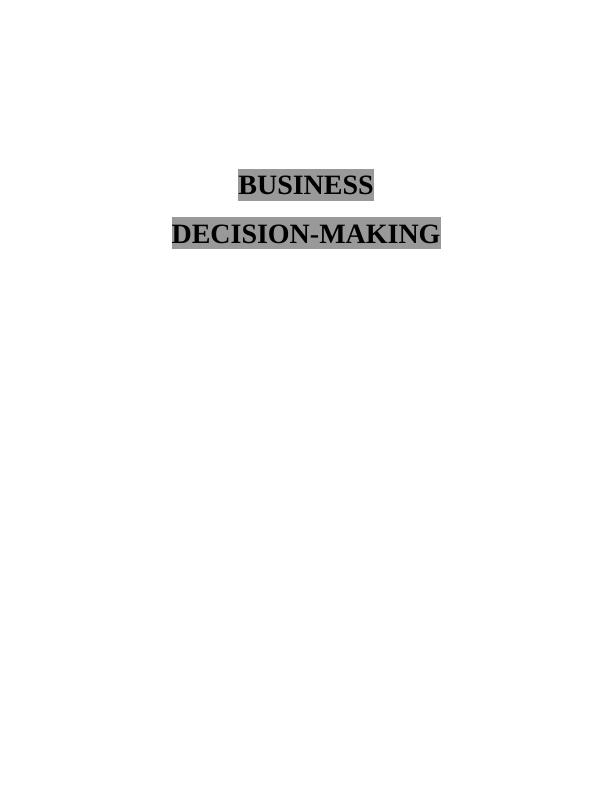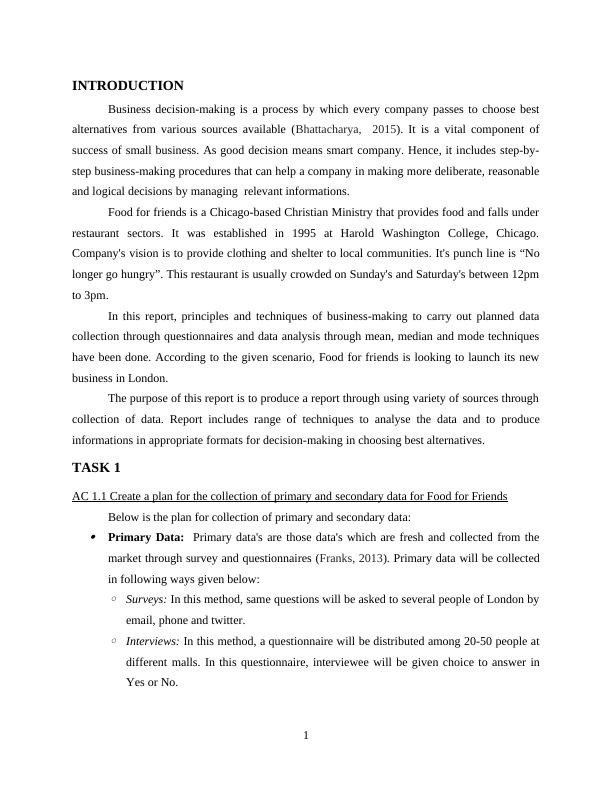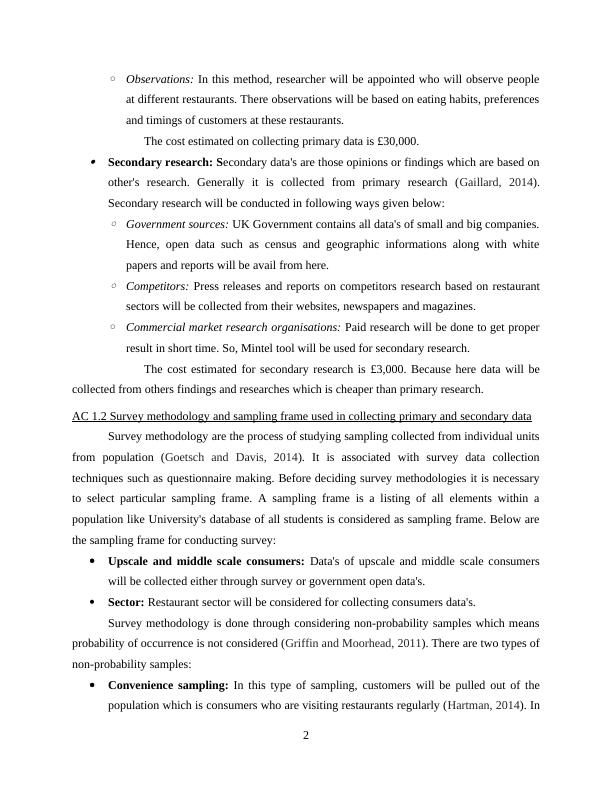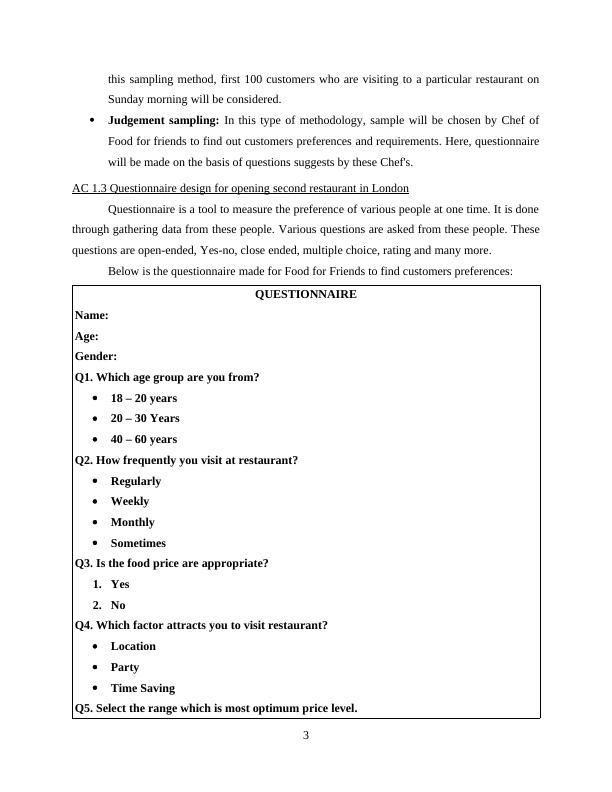BUSINESS DECISION-MAKING INTRODUCTION
23 Pages4711 Words385 Views
Added on 2020-06-04
About This Document
BUSINESS | DECISION-MAKING METHODS Business decision-making is a process by which every company passes to choose best alternatives from various sources available (Bhattacharya, 2015). In this report, principles and techniques of business-making to carry out planned data collection through questionnaires and data analysis through mean, median and mode techniques have been done. TASK 1 1 AC 1.1 Create a plan for the collection of primary and secondary data for Food for Friends Below is the plan for collection of primary and secondary
BUSINESS DECISION-MAKING INTRODUCTION
Added on 2020-06-04
ShareRelated Documents
End of preview
Want to access all the pages? Upload your documents or become a member.
Decision Making in Food for Friends restaurant - Report
|20
|5009
|38
Business Decision Making (Doc)
|63
|4296
|328
Business Decision Making in Blackfriars Restaurant
|17
|4652
|46
Business Decision Making in Restaurant - China
|21
|3817
|419
Business Decision Making for Restaurant Assignment
|24
|5124
|177
Business Decision Making
|19
|4726
|224






